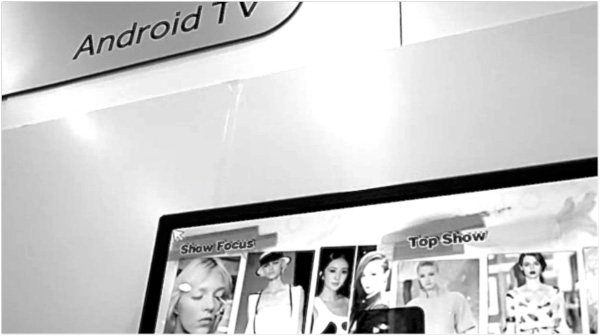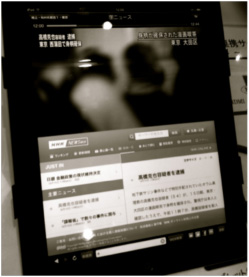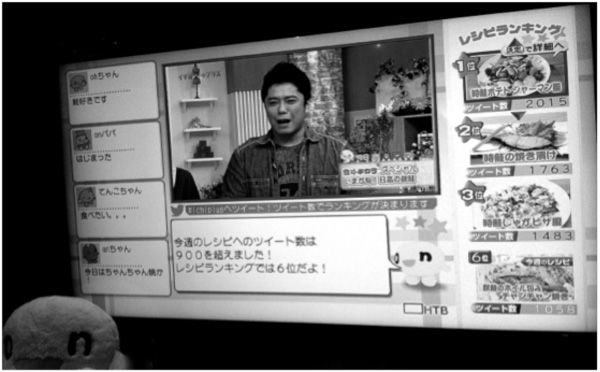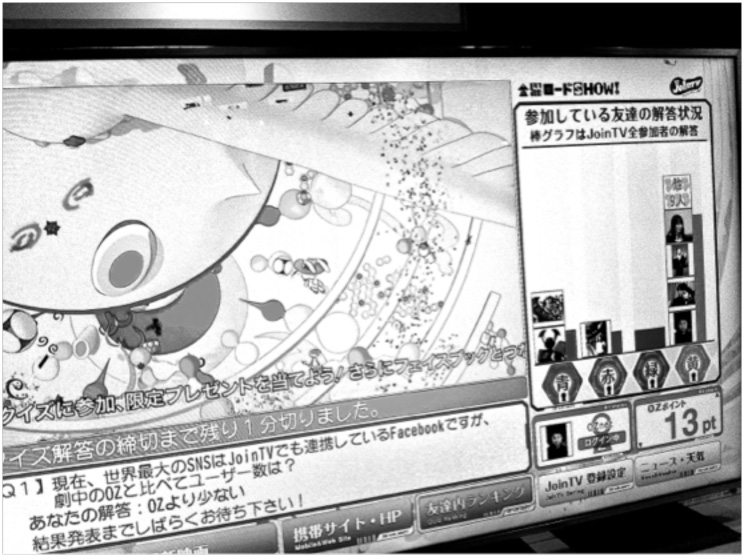ROCKMEDIA #43
Smart TV Twists in Japan
|
 |

Android TV made in China @CES 2012
TV widget to Smart TV
In January 2009, I happened to stop by the Intel booth at CES (Consumer Electronic Show) and know very strange service. It was called “TV widget” at you can buy dramas from CBS collection through the small window (widget). That made my eyes open.
Two years later, Samsung’s SMART TV launched with the same chip as Intel provides with TV widget. Now many Chinese manufacturers are selling what they call Android TV.
In three years since TV widget launch, the difference between TV and tablets & smartphones has become the size of a screen.
Social Tag from Toshiba
This TV Widget to Smart TV trend would not reach in Japan for a while. Because Japanese home electronics manufacturers pushed 3D TV in 2010. But, the number of TV units sold in Japan has decreased 20% in 2011 compared with the previous year. (The number of units sold in 2012 so far is only 28% of the previous year.)
Toshiba is the only brand among Japanese big brands for TV sets that has been creating the unique Smart TV service. Their social tag service enables viewers to share your favorite programs and become easy to discover the program recorded. In Japan, you can record TV programs with HDD and networks programs are free. So if you bought HDD recorders at 20,000 JPY (US$250), anyone including non-cable subscribers can enjoy your own TV Everywhere.
Who Provides Smart TV?
In the US, smart TV is the device innovation that enables viewers to watch contents on demand. Its media market structure is horizontally separated. So, contents distribution platforms provide on demand service on smart TV infrastructure.
Hollywood and networks used Smart TV as one of new distribution channel. They build the pay-wall such as Ultra Violet, TV Everywhere or hulu on smart TV.
In Japan, manufacturers like Toshiba and major TV networks play major role in providing smart TV service, such as on demand viewing and favorite programs sharing in cloud. (REGZA Apps Connect )
Japanese major networks are still independent (no parent companies) and profitable. The five major networks’ revenue increased by 2% and net income did by 31% in the fiscal year of 2011. The share of the advertising revenue to the all revenue of five major networks is 55%. The media business is still their main job.
So, the smart TV services that broadcast companies propose include some twists when it reached in Japan.
Data Broadcasting Meets Social Media - Join TV, Hybridcast and Televidecho -

Hybridcast from NHK @IMC 2012
In June 2012, MIC (the ministry of Internal Affairs and Communications) opened its strategy about the Japanese Smart TV. After that, smart TV achieved much attention among broadcasters.
NHK, a public broadcast company, want to standardize its smart TV services called Hybridcast. (see p.17 of their quarterly reports)
Hybridcast is the technology that you can watch and control TV contents from the second screen (smartphones and tablets). It plans to launch in 2013.
Commercial broadcast companies tried to create smart TV service as well. NTV launched its “Join TV” that you can share your favorite shows or comments with your friends, if you checked in Facebook.
HTB(Hokkaido Television Broadcasting)’s “TeleVidEcho” shows viewer’s tweets on its data broadcasting territory on screen. (it opened only beta version yet)
So, in Japan there are emerging that social media meets data broadcasting technology.

TeleVidEcho of HTB @CEATEC 2012
Japanese Progress on Smart TV

JoinTV of NTV @CEATEC 2012
Japanese broadcast companies add more invention meticulously and expand the smart TV horizon.
Join TV provides games along with the movie scenario that viewers can play on their smartphones. The “movie synchronizer” encourages viewers to compete how much accurate you can tweet the word at the same time that a character speaks in the movie.
This kind of content related games can be created because the broadcast companies in Japan still are main contents providers and have creative mindset. Join TV is one of the most progressive smart TV in the world.
Hybridcast from NHK is progressive as well. Viewers can control one of cameras that you want to watch from during a live relay sports event. If you want to watch figure skating from the bottom camera, just choose that on your tablet button. Or, you can indicate a map on TV screen, when you watch a travel program. Now many of NHK programs show twitter timeline and hash-tag on screen and so do most programming of commercial broadcasters.
Social TV for Media Business
A Time Warner executive said that only TV show that is watched in the living room is Super Bowl at the conference in NAB Show 2012. Japanese broadcast companies don’t give up to collect eyeballs on real-time viewing. Join TV aims to create a virtual living room where family and friends online watch the same program at the same time. They need real-time viewers as many as possible to maintain their media business.
The US smart TV is just infrastructure of media conglomerates’ pay-wall. Japanese smart TV is the tools for their media business. It could be the social TV more than smart TV. Those different evolutions between two countries root the market structure of both areas. It is interesting to see what will be going on next.

|




